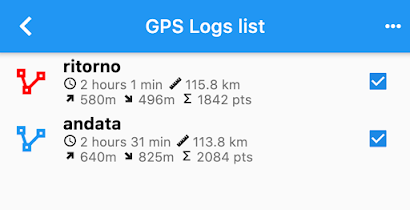Today we released SMASH 1.6.1 to the stores.
The main reason we are doing this is because there was a startup bug that was freezing SMASH, mostly on Xiaomi devices. If you experienced something like this: https://github.com/moovida/smash/issues/81
...well, update and it will be gone.
That said, we also have some significant additions:
Geotiff support
Up to now we had tiff support needing world files and projection file to be present. Now geotiff tag reading is supported, so "real" geotiffs can be read. This is quite handy, since the image file gets back to be a single one again. Same as for other imagery types it supports overall transparency and single color removal, which allows for some nice technical map overlays (for example):
Geo-fences
Since were we live the COVID lockdown imposed people to only walk a certain distance from home, we decided to lend a helping hand. You now can add fences and make them ring when you enter or exit the radius.
The fence option is available from the bottom toolbar:
Once you hit it, it inserts a new fence in the current map center:
Defining the fence with no sound will result in a grey colored fence to show that it is "inactive":
To modify an existing fence, just place the map center inside its circle and then long tap the fence button. The fence dialog will appear again, this time with an additional possibility to remove the fence.
Now that the fence is active (on enter and exit sound set), the color is red and there are two borders. The green one reminds that on entering there will be a sound, and the blue one that on exit there will be a sound.
Just so you know, fences are not saved into the project, but only in the application preferences. This means that on uninstall or app cache removal.. they will disappear.
Log lines themes
While this is possibly my favorite feature of this release, I have written about it in my last post here, so just check there for descriptions and images.
Other small features
Magnet icon for center on gps: if you are in automatic center on gps mode (double tap on gps icon), it will be visible through a small magnet:
Location permission at startup now allows to access the settings to activate directly background gps usage even when the app is not in use.
Note sharing now also contains the complete OSM url (not sure how that could have been missing up to now):
Project browsing has been made more readable. Not sure how about you, but in my case I just create a new project and using the default proposed name, I simply add something meaningful at the end of it, after an underscore. This allows me to order my projects alphabetically also by timestamp. The problem is that when I want to load an older project, I find myself in this:
The smash_timestamp take the whole line and makes everything unreadable. So now you can activate the upper right filter and the timestamp will be removed from the name and added as additional info ( day and time if available):
I guess that is it for this release. Enjoy!


























































